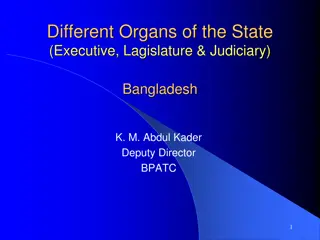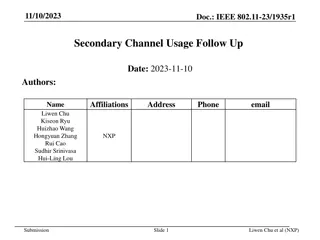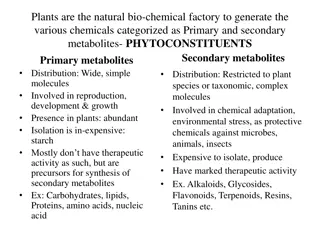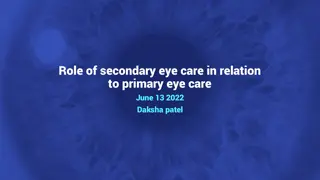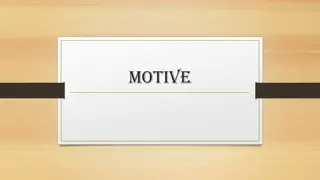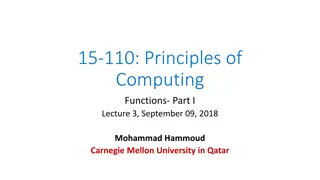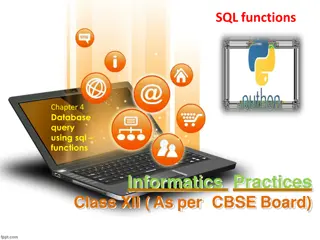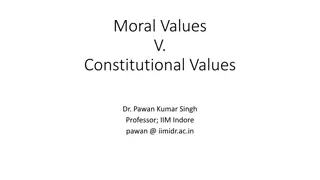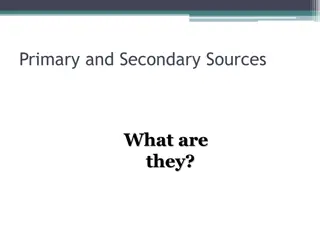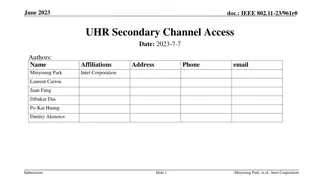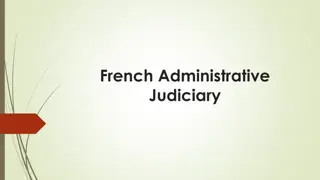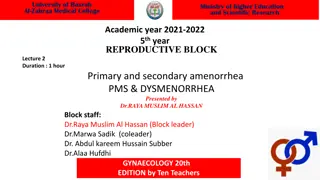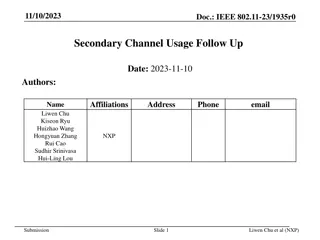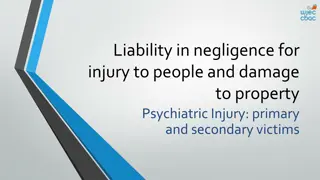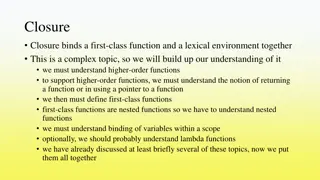Primary and Secondary Functions of the Judiciary
The lecture discusses the primary functions of courts, which include the administration of justice through the application of rules and enforcement of rights. It also delves into secondary functions such as petition of rights, declaration of rights, and the administration of property in cases of insolvency or trusts. These functions highlight the diverse roles courts play in upholding justice and resolving legal disputes.
Download Presentation

Please find below an Image/Link to download the presentation.
The content on the website is provided AS IS for your information and personal use only. It may not be sold, licensed, or shared on other websites without obtaining consent from the author. Download presentation by click this link. If you encounter any issues during the download, it is possible that the publisher has removed the file from their server.
E N D
Presentation Transcript
JURISPRUDENCE-II Lecture:4 Topic: Primary & Secondary Functions of the State Semester: 6th BS Law Khyber Law College University of Peshawar
AGENDA Primary Functions of the Courts Secondary functions of the Courts Conclusion
PRIMARY FUNCTIONSOFTHECOURTS The primary functions of a court of law are the administration of justice, viz., the application by the State of the sanction of physical force to the rules of justice. Justice is administered by a court by the enforcement of a right and the punishment of wrongs. It involves in every case two parties, namely, a plaintiff and a defendant, the prosecutor or complainant and the accused, and a judgment in favor of the one or the other.
CONTINUED Proceedings before a court of law are either penal or remedial. In penal proceedings the law aims to secure the punishment of the defendant. In remedial proceedings, on the other hand, the idea of punishment is entirely absent.
SECONDARYFUNCTIONSOFTHECOURTS In addition to the primary and basic function the courts does perform some functions which are secondary in nature. They are as following Petition of rights: Cases where a subject claims a right against the state/ complains of a wrong against the state. 1. Falls under the category of secondary functions. Because it cannot be included in administration of justice in the strict sense in as much as it involves the use of physical force of the state and in cases to which the state is defendant, the state cannot compel itself to enforce the decision. Decision in such matters is then made only under the delegated authority of the state and courts giving decisions in these matters perform secondary functions. In Pakistan such petitions take the form of writ for habeas corpus, mandamus, certiorari and quo warranto
CONTINUED . . . . Declaration of rights: A person may seek the assistance of court not merely where his rights have actually been infringed. He can also go to court where there being some uncertainty about his rights. He wants to have some clarifications on them. In other words he may seek for a declaration that a particular defined rights exists to him or that it does not exist in another person. Such suits are called as declaratory suits. Examples of declaratory proceedings are declaration of legitimacy, declaration of nullity of marriage, etc.
RIGHTS & DUTIESCO-RELATIONSHIP Administration: The courts take up the administration/ management, realization and distribution of property in cases of insolvency, of trusts, or estates of a deceased person.
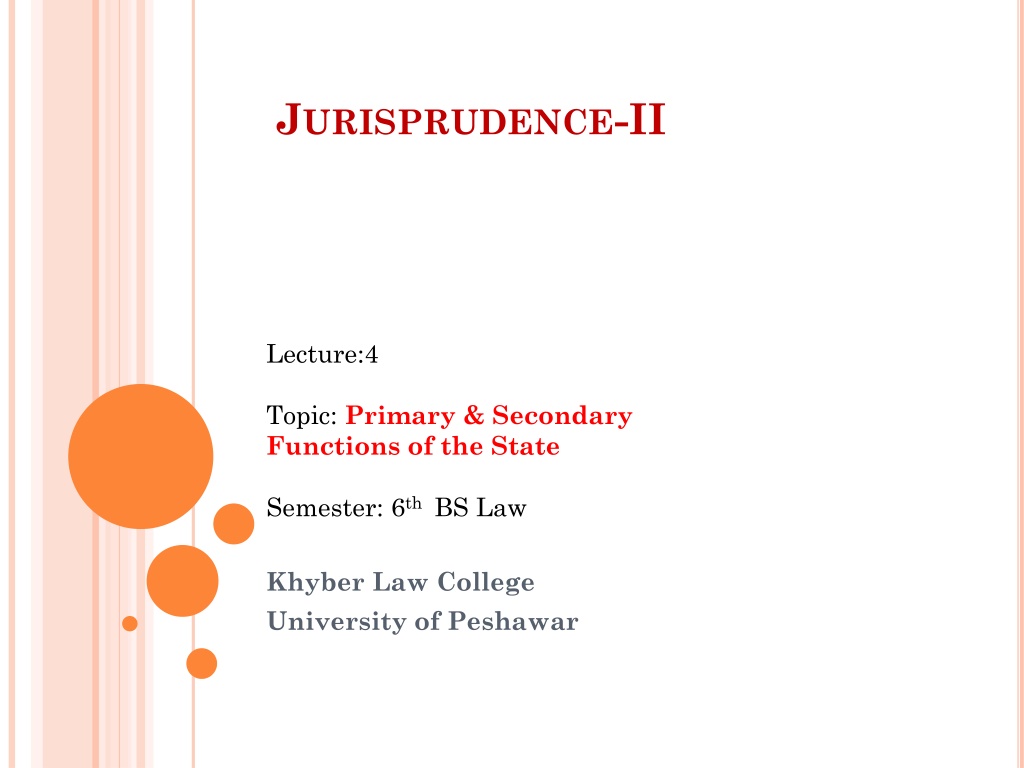
 undefined
undefined























